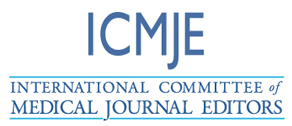Prevalence and Predictors of Risky Sexual Behavior in HIV-Infected Adolescents: A Study from Kaduna, Nigeria
DOI:
https://doi.org/10.55677/IJCSMR/V4I3-08/2024Keywords:
HIV/AIDS, Adolescents, Risky Sexual Behavior, Youth-Friendly Services, Sexual and Reproductive HealthAbstract
Background: The prevalence of risky sexual behavior among HIV-infected adolescents is a public health challenge, especially in regions with a high HIV burden like Sub-Saharan Africa. This study explores the prevalence and predictors of such behaviors among adolescents receiving care in a youth-friendly clinic in Kaduna, Nigeria.
Methods: In a cross-sectional study conducted at a tertiary hospital's youth-friendly clinic, we analyzed data from 200 HIV-infected adolescents aged 13 to 19 years. The revised Risky Sexual Behaviour Questionnaire (RSBQ) provided comprehensive data, which was subjected to logistic regression analysis to identify significant predictors of risky sexual behaviors.
Results: The study found a 45% prevalence of risky sexual behaviors among participants. Logistic regression analysis indicated significant predictors including male gender (OR = 2.1), lower education level (OR = 2.5), and poor HIV-related knowledge (OR = 2.8).
Conclusions: Nearly half of the HIV-infected adolescents engaged in risky sexual practices, with significant predictors identified across gender, education, and HIV knowledge domains. These findings underscore the urgent need for targeted educational and behavioral interventions tailored to this vulnerable population.
References
Baker JL. Risky sexual behavior among adolescents: The role of decision-making. J Adolesc Health. 2003;32(3):217-225.
Lansdown G, Warne T, Gillen P. The sexual health of young people: A review of reviews. Child Fam Soc Work. 2012;17(1):18-30.
Wiysonge CS, Kongnyuy EJ, Shey M, Muula AS, Navti OB, Akl EA, et al. Male circumcision for prevention of homosexual acquisition of HIV in men. Cochrane Database Syst Rev. 2017;(5):CD007496.
Babalola S, Fatusi A, Anyanti J. Media saturation, social norms, and adolescent sexual behavior in Nigeria. Afr J Reprod Health. 2014;18(1):142-153.
Idele P, Gillespie A, Porth T, Suzuki C, Mahy M, Kasedde S, et al. Epidemiology of HIV and AIDS among adolescents: current status, inequities, and data gaps. JAIDS J Acquir Immune Defic Syndr. 2014;66:S144-S153.
Earnshaw VA, Chaudoir SR. From conceptualizing to measuring HIV stigma: A review of HIV stigma mechanism measures. AIDS Behav. 2009;13(6):1160-1177.
Adefolalu AO. Sexual behaviour and practices among adolescents living with HIV in Sub-Saharan Africa: A systematic review. Afr J Reprod Health. 2018;22(3):31-43.
Mmari K, Sabherwal S. A review of risk and protective factors for adolescent sexual and reproductive health in developing countries: An update. J Adolesc Health. 2013;53(5):562-572.
Pettifor A, Levandowski BA, MacPhail C, Padian NS, Cohen MS, Rees HV. Keep them in school: The importance of education as a protective factor against HIV infection among young South African women. Int J Epidemiol. 2012;41(6):1665-1673.
Hallfors DD, Iritani BJ, Miller WC, Bauer DJ. Sexual and drug behavior patterns and HIV/STD racial disparities: The need for new directions. Am J Public Health. 2007;97(1):125-132.
Downloads
Published
How to Cite
Issue
Section
License
Copyright (c) 2024 International Journal of Clinical Science and Medical Research

This work is licensed under a Creative Commons Attribution 4.0 International License.











